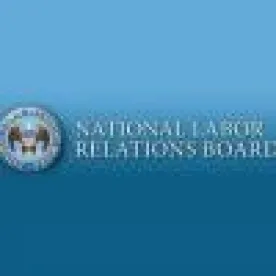On August 29, 2022, the National Labor Relations Board (NLRB) issued a decision finding that absent special circumstances, employers may not enforce dress codes or uniform policies that interfere with employees’ right to display union insignia. 371 NLRB No. 131 (Aug. 29, 2022). The NLRB’s decision is a return to a more restrictive precedent for analyzing whether an employer’s dress code or uniform policy unlawfully interferes with employee rights under the National Labor Relations Act (NLRA).
Background
Since the U.S. Supreme Court’s 1945 decision in Republic Aviation Corp. v. NLRB, 324 U.S. 793, 801-803 (1945), the NLRB generally has determined that even if work rules and uniform policies are facially neutral, employers cannot prohibit the wearing of all union buttons and insignia unless the employer showed “special circumstances” for the prohibition. This standard changed during the Trump Administration, however, when the Trump Board held in Wal-Mart Stores Inc., 368 NLRB No. 146 (2019) that employers may maintain facially neutral dress codes. Under Wal-Mart, an employer only had to show “special circumstances” if its policies explicitly prohibited wearing union apparel or insignia. As a result, the “special-circumstances” test applied only when an “employer completely prohibited union insignia,” and restrictions could be deemed lawful depending on certain employer interests.
The Decision
In a 3-2 split along party lines, the Board overturned Wal-Mart and now returns to the pre-Trump analysis under which facially neutral work rules may restrict the display of union insignia only if the employer shows “special circumstances” justifying the prohibition. Such special circumstances include “when their display may jeopardize employee safety, damage machinery or products, exacerbate employee dissension, or unreasonably interfere with a public image that the employer has established, or when necessary to maintain decorum and discipline among employees.”
The Board stated, “when an employer interferes in any way with its employees’ right to display union insignia, the employer must prove special circumstances that justify its interference.” The decision shows that any type of ban or restriction on union insignia, absent special circumstances, may violate the Act unless the rule is necessary to “maintain production or discipline.”
Implications
An employer’s prohibition of an employee’s display of union insignia on their uniform or apparel is presumed to be unlawful. As a result of this heightened burden, employers will need to establish “special circumstances” warranting interference, even if such restriction or limitation is part of a neutral uniform policy and does not restrict union insignia entirely.
The decision highlights the numerous changes under the Biden Administration, as the more union-friendly Board seeks to limit perceived infringement on protected speech. Accordingly, employers may need to revisit their uniform or apparel policies and the reasons behind them in order to withstand Board scrutiny.





 />i
/>i

